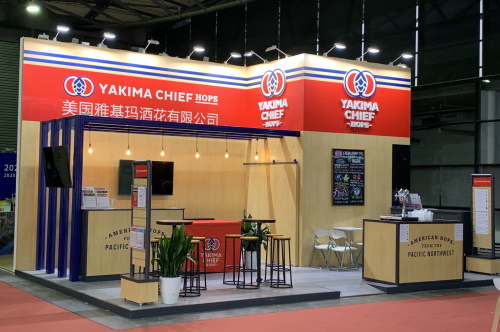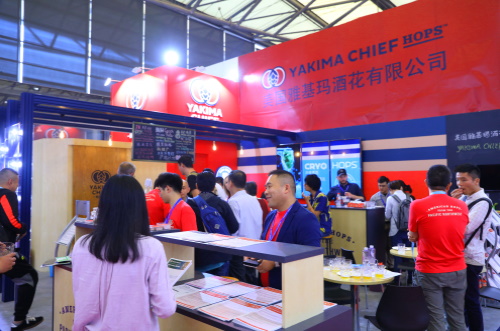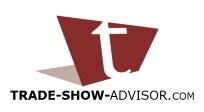Adaptable Exhibits
How to Design One Booth for Different Footprints
A trade show exhibit has many needs to meet. Within one well-defined area, it has to provide room for people to move about and comfortably take part in a range of activities. In addition, it should be:
- Interesting and engaging
- Informative
- Practical
- Flexible
That last need—flexibility—is especially important, and always in demand. One way to achieve exhibit flexibility is to design it to adapt to booth spaces of different sizes. With a flexible exhibit that you can use at more than one trade show, conference, or event, your investment works harder for you, and for longer.
WHAT QUALIFIES AS FLEXIBLE DESIGN?
Many booths—especially custom booths—are designed to fit particular footprints; thus their size and dimensions are fixed. In contrast, a flexible trade show booth can be configured in different ways to fit into multiple footprints.
Both custom and modular exhibits can be designed with flexibility in mind. Wall and display components can be added or removed as needed to modular exhibits, and custom booths can be designed to adapt to different sizes and uses.
Layout flexibility is important too. With a flexible layout, a booth can work not just at different sizes, but in different locations too. For example, if your exhibit will be positioned at the end of an aisle, you may want a different layout than if your spot is in the middle of an aisle or backed onto a wall. Changing the layout according to exhibit location can help make your booth more visible on the show floor, boosting traffic no matter where you’re located. Once people are inside, the layout helps direct the flow of traffic.
WHY BUILD AN ADAPTABLE EXHIBIT?
The advantages are many:
- The size of your booth won’t limit your growth because your booth will grow with you.
- You can use it at multiple shows, in different-sized spaces. This reduces your cost-per-use and helps you get more value for the money you spend.
- As you attend more events, your booth will be recognized, building a distinct image that boosts your brand recognition over time.
HOW TO INCORPORATE FLEXIBILITY INTO EXHIBIT DESIGN
To design an adaptable trade show booth, begin by asking yourself a few questions:
1. What footprints do you need to accommodate?
While floor layout is the obvious consideration here, don’t neglect the booth’s vertical space. The amount of vertical space you have changes depending on:
- The size of the booth
- Its location on the show floor
For larger footprints, you can take advantage of having more vertical space with canopies and hanging signs to make your exhibit visible at a greater distance.
2. What features should be included in each size?
This is harder to answer because you have to think in terms of both general needs and your needs for specific shows you might attend. The features you want at a given show will depend on your specific goals for that show, so it’s more complicated than just including a set list of features.
One solution is to develop a flexible design that allows you to mix-and-match features within a specific footprint. Another possibility is to design a custom booth that can scale up to two or three different sizes and layouts.
A few options for adaptable booths include:
1. Modular exhibits
Modular designs are made of individual structural and display components. These booth designs are inherently flexible, with the added advantage that it’s easy to add new components as your exhibit needs expand.
Modular designs are ideal for a wide range of purposes and budgets. They’re especially useful if you plan to attend shows in different markets, as you can mix-and-match components for each specific show. You can also opt for modular components with changeable graphic panels, allowing you to swap out graphics to suit the events you attend.
2. Custom adjustable booths
While some custom displays are designed to fit one specific footprint, it’s possible to create custom designs that can adjust to different sizes and layouts. Removable wall panels, adjustable canopies, and similar design features ensure your booth looks professional and tailor-made at every show. While a custom exhibit generally requires a bigger budget, it has the high impact to match, and often gets both traffic and press.
ProExhibits produced a highly customized adjustable booth for Stikwood. The exhibit looked and felt like a barn but was made of interlocking panels. By removing some of the panels, the booth could accommodate a smaller footprint.
3. Tension fabric displays
In a tension fabric display, fabric is stretched over a resizable frame, giving a seamless, all-in-one look with clean, modern lines. Tension fabric displays are both flexible and cost-effective, as you can change the shape and size by adding or removing frame components. If you’re on a tight budget or don’t need an elaborate display, tension fabric is a great option.
CASE STUDY: LEARN FROM YAKIMA CHIEF HOPS
Adaptable design does not limit what that design can achieve. Sometimes it expands on it!. The design ProExhibits created for Yakima Chief Hops (YCH) is a great example of a flexible trade show booth.
 This adaptable exhibit allows Yakima Chief Hops to use the same booth at multiple shows. It provides the flexibility to accommodate different venue spaces, sizes and configurations.
This adaptable exhibit allows Yakima Chief Hops to use the same booth at multiple shows. It provides the flexibility to accommodate different venue spaces, sizes and configurations.
YCH is a network of grower-owned hop farms in the Pacific
Northwest. The brand aims to become a leading global hop supplier.
With plans to attend events on three different continents, Yakima
Chief Hops approached ProExhibits for an exhibit they could use at
international industry events.
Flexibility was integral to the design brief because YCH had shows booked on three different continents: Europe, Asia, and North America—each with different size requirements and restrictions for exhibits.
YCH also wanted to include two specific features in all the booths:
- A sensory station for visitors to see and touch hops grown on the farms
- A pouring station for visitors to taste beer made with YCH’s hops
Both stations needed to be present at all size variations for all three booth designs.
The Flexible Solution
Three versions of the same scalable booth concept were created, one for each continent where YCH planned to exhibit and each with a different max size:
- 20 x 40 ft for North America
- 11 x 10 m for Europe
- 9 x 5 m for Asia
All three were constructed using a flexible, modular design system. This meant YCH could adjust them up and down in size to accommodate multiple booth footprints.
All three designs can accommodate the sensory and pouring stations, at any size. ProExhibits also designed customized meeting and storage areas that reduce in size at smaller footprints, further improving scalability.
YCH has attended several shows with the new rig. The organization's representatives say their adaptable exhibit display helps them get more booth traffic and provides a more engaging visitor experience.
FUTURE-PROOF YOUR BOOTH WITH AN ADAPTABLE DESIGN
Purchasing a trade show exhibit is a significant investment, so it makes sense to choose a flexible booth design that works in a range of footprints and sizes. This lets you use the booth at a wider range of events, decreasing your cost-per-use and making your trade show marketing more cost-effective.
Related Information - Adaptable Exhibits
3 Seconds to Make an Impression with Your Exhibit
Working with a Trade Show Display Provider
Trade Show Suppliers and Resources
Share Success Tips Do you have a great exhibiting or marketing tip that enhanced
your trade show results? Share it here! |



